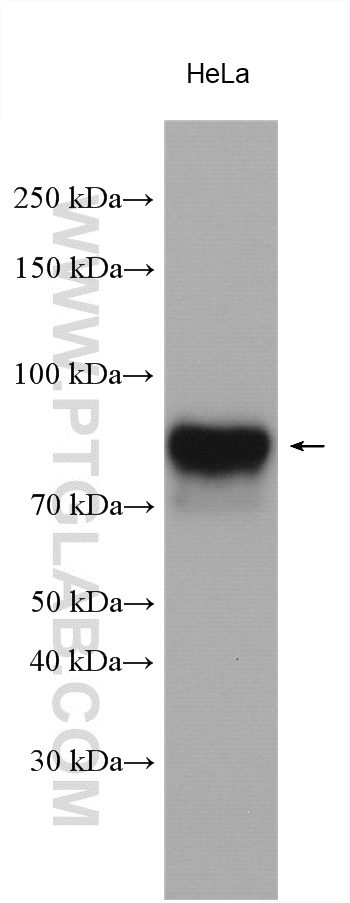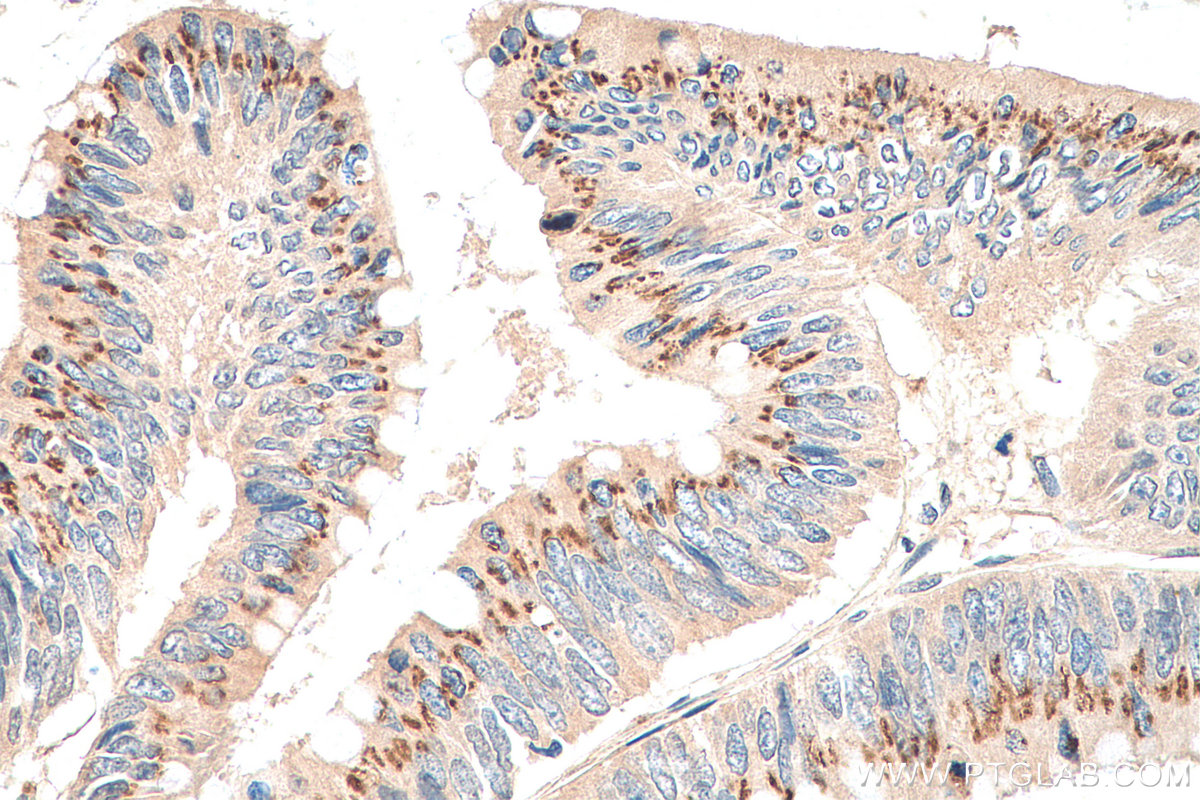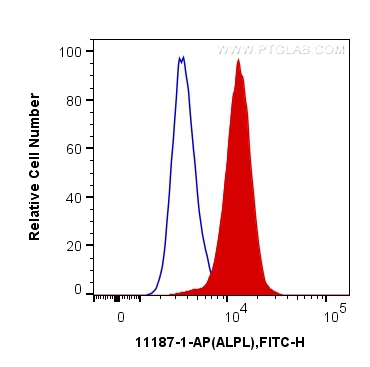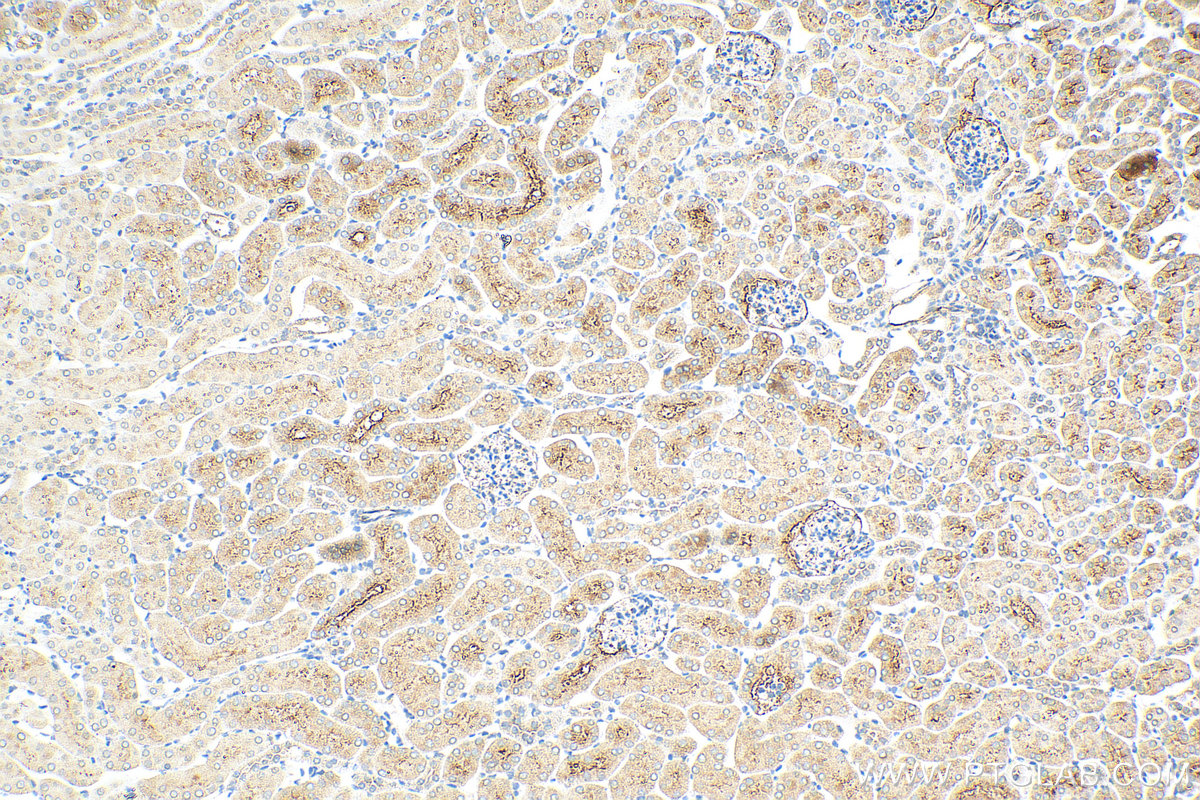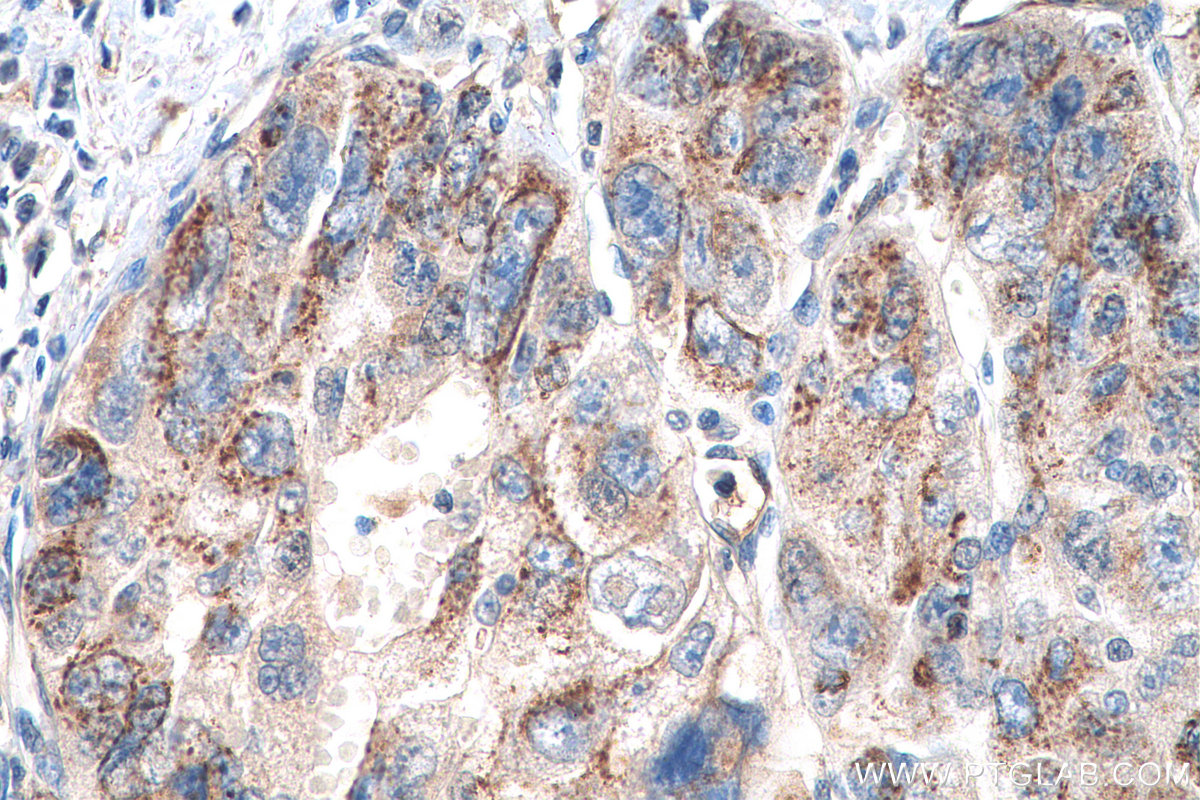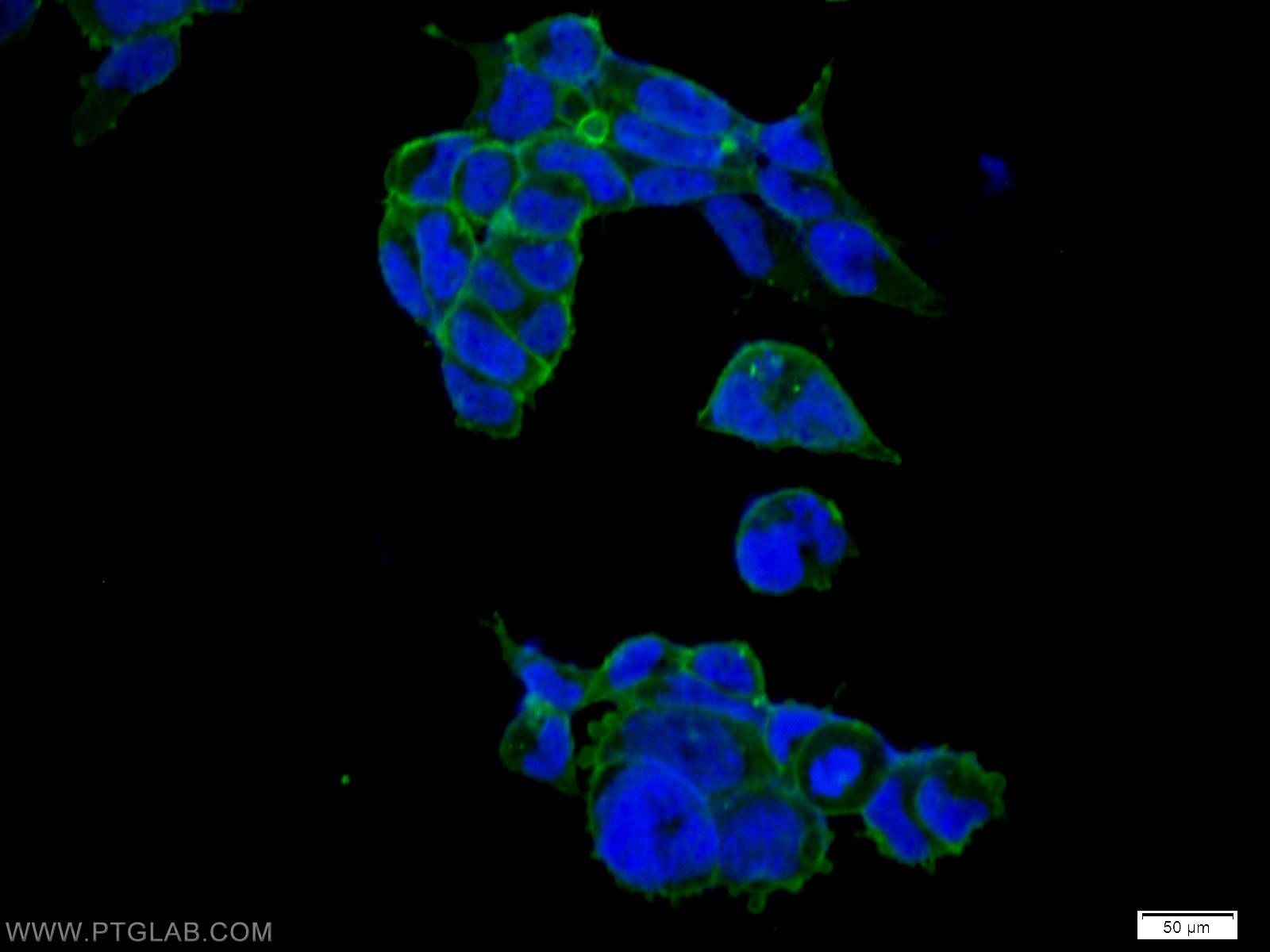验证数据展示
经过测试的应用
| Positive WB detected in | HeLa cells |
| Positive IHC detected in | human colon cancer tissue, human liver cancer tissue, mouse kidney tissue Note: suggested antigen retrieval with TE buffer pH 9.0; (*) Alternatively, antigen retrieval may be performed with citrate buffer pH 6.0 |
| Positive FC (Intra) detected in | HeLa cells |
推荐稀释比
| 应用 | 推荐稀释比 |
|---|---|
| Western Blot (WB) | WB : 1:500-1:2000 |
| Immunohistochemistry (IHC) | IHC : 1:200-1:800 |
| Flow Cytometry (FC) (INTRA) | FC (INTRA) : 0.20 ug per 10^6 cells in a 100 µl suspension |
| It is recommended that this reagent should be titrated in each testing system to obtain optimal results. | |
| Sample-dependent, Check data in validation data gallery. | |
产品信息
11187-1-AP targets ALPL in WB, IHC, IF, FC (Intra), chIP, ELISA applications and shows reactivity with human samples.
| 经测试应用 | WB, IHC, FC (Intra), ELISA Application Description |
| 文献引用应用 | WB, IHC, IF, chIP |
| 经测试反应性 | human |
| 文献引用反应性 | human |
| 免疫原 |
CatNo: Ag1664 Product name: Recombinant human ALPL protein Source: e coli.-derived, PGEX-4T Tag: GST Domain: 23-330 aa of BC021289 Sequence: EKDPKYWRDQAQETLKYALELQKLNTNVAKNVIMFLGDGMGVSTVTAARILKGQLHHNPGEETRLEMDKFPFVALSKTYNTNAQVPDSAGTATAYLCGVKANEGTVGVSAATERSRCNTTQGNEVTSILRWAKDAGKSVGIVTTTRVNHATPSAAYAHSADRDWYSDNEMPPEALSQGCKDIAYQLMHNIRDIDVIMGGGRKYMYPKNKTDVEYESDEKARGTRLDGLDLVDTWKSFKPRYKHSHFIWNRTELLTLDPHNVDYLLGLFEPGDMQYELNRNNVTDPSLSEMVVVAIQILRKNPKGFFLL 种属同源性预测 |
| 宿主/亚型 | Rabbit / IgG |
| 抗体类别 | Polyclonal |
| 产品类型 | Antibody |
| 全称 | alkaline phosphatase, liver/bone/kidney |
| 别名 | Alkaline phosphatase, AKP2, Alkaline phosphatase liver/bone/kidney isozyme, Alkaline phosphatase tissue nonspecific isozyme, Alkaline phosphatase, tissue-nonspecific isozyme |
| 计算分子量 | 57 kDa |
| 观测分子量 | 80 kDa |
| GenBank蛋白编号 | BC021289 |
| 基因名称 | ALPL |
| Gene ID (NCBI) | 249 |
| RRID | AB_2305523 |
| 偶联类型 | Unconjugated |
| 形式 | Liquid |
| 纯化方式 | Antigen affinity purification |
| UNIPROT ID | P05186 |
| 储存缓冲液 | PBS with 0.02% sodium azide and 50% glycerol, pH 7.3. |
| 储存条件 | Store at -20°C. Stable for one year after shipment. Aliquoting is unnecessary for -20oC storage. |
背景介绍
There are at least four distinct but related alkaline phosphatases: intestinal, placental, placental-like, and liver/bone/kidney (tissue non-specific). The product of this gene is a membrane bound glycosylated enzyme that is not expressed in any particular tissue and is, therefore, referred to as the tissue-nonspecific form of the enzyme. ALPL(Alkaline phosphatase, tissue-nonspecific isozyme) is also named as AP-TNAP, TNSALP and belongs to the alkaline phosphatase family. It can exsit as a homodimer with the molecular weight of 140 kDa(PMID:18724009). ALPL was synthesized as a 66-kDa endo-b-N-acetylglucos-aminidase H (Endo H)-sensitive form, and processed to an 80-kDa mature form, which is anchored to the plasma membrane via glycosylphosphatidylinositol (GPI)(PMID:10839996).This antibody can bind the four mentioned alkaline phosphatases.
实验方案
| Product Specific Protocols | |
|---|---|
| FC protocol for ALPL antibody 11187-1-AP | Download protocol |
| IF protocol for ALPL antibody 11187-1-AP | Download protocol |
| IHC protocol for ALPL antibody 11187-1-AP | Download protocol |
| WB protocol for ALPL antibody 11187-1-AP | Download protocol |
| Standard Protocols | |
|---|---|
| Click here to view our Standard Protocols |
发表文章
| Species | Application | Title |
|---|---|---|
Mol Ther Nucleic Acids Circular RNA circSmoc1-2 regulates vascular calcification by acting as a miR-874-3p sponge in vascular smooth muscle cells. | ||
Virol Sin Establishment and characterization of a new cell culture system for hepatitis B virus replication and infection. | ||
J Cell Physiol Cell dynamics in Hertwig's epithelial root sheath are regulated by β-catenin activity during tooth root development. | ||
ACS Biomater Sci Eng Polydopamine-Coated Poly(l-lactide) Nanofibers with Controlled Release of VEGF and BMP-2 as a Regenerative Periosteum. | ||
Front Cell Dev Biol IL-18-Mediated SLC7A5 Overexpression Enhances Osteogenic Differentiation of Human Bone Marrow Mesenchymal Stem Cells via the c-MYC Pathway. |

